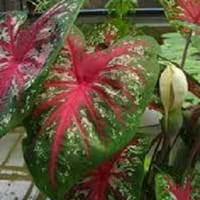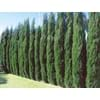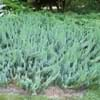Life Span
Perennial
Annual and Perennial
Type
Needled or Scaled Evergreen
Tender Perennial
Origin
California
Southern Europe, Mediterranean
Types
Southern cypress, Gulf cypress
Not Available
Habitat
Floodplains, Swamps
gardens, Grassland, Prairies, tropical environments, Tropical regions
USDA Hardiness Zone
7-11
7-9
Sunset Zone
17
4, 5, 6, 14, 15, 16, 17, 18, 19, 20, 21, 22, 23, 24
Habit
Pyramidal
Mat-forming
Flower Color
Brown
White, Green
Flower Color Modifier
Bicolor
Bicolor
Fruit Color
Green, Light Green
Green
Leaf Color in Spring
Dark Green
Gray Green
Leaf Color in Summer
Dark Green
Gray Green
Leaf Color in Fall
Dark Green
Gray Green
Leaf Color in Winter
Dark Green
Light Green
Leaf Shape
Needle like
Linear
Plant Season
Spring, Summer, Fall, Winter
Spring, Summer, Fall, Winter
Sunlight
Full Sun
Full Sun, Partial Sun
Type of Soil
Clay, Loam, Sand
Loam, Sand
The pH of Soil
Acidic, Neutral
Neutral, Alkaline
Soil Drainage
Well drained
Well drained
Bloom Time
Early Summer
Spring, Late Spring, Early Summer, Summer, Late Summer, Early Fall
Tolerances
Drought
Drought
Where to Plant?
Ground
Container, Ground, Pot
How to Plant?
Seedlings, Transplanting
Seedlings, Stem Cutting
Plant Maintenance
Low
Medium
Watering Requirements
Medium, Requires consistently moist soil, Requires watering in the growing season
Allow soil to be completely dry in between waterings, Water Deeply, Water less during winter
In Summer
Lots of watering
Lots of watering
In Spring
Moderate
Moderate
In Winter
Average Water
Average Water
Soil pH
Acidic, Neutral
Neutral, Alkaline
Soil Type
Clay, Loam, Sand
Loam, Sand
Soil Drainage Capacity
Well drained
Well drained
Sun Exposure
Full Sun
Full Sun, Partial Sun
Pruning
Prune if you want to improve plant shape, Prune in early summer, Prune in the late winter or spring, Remove damaged leaves, Remove dead branches, Remove dead leaves
Cut or pinch the stems, Do not prune during shooting season, Prune if you want to improve plant shape, Prune prior to new growth, Remove deadheads
Fertilizers
All-Purpose Liquid Fertilizer, fertilize in spring
No fertilizers needed
Pests and Diseases
Red blotch
fungus, Insects, Red blotch
Plant Tolerance
Cold climate, Drought
Drought
Flowers
Not Available
Not Available
Flower Petal Number
Single
Single
Fragrant Bark/Stem
Yes
No
Foliage Texture
Medium
Fine
Foliage Sheen
Not Available
Matte
Attracts
Birds, Butterflies, Insects
Bees, Birds, Butterflies
Allergy
Asthma, breathing problems
Skin irritation
Aesthetic Uses
Beautification, Landscape Designing
Beautification, Showy Purposes
Beauty Benefits
Not Available
Not Available
Environmental Uses
Air purification, Food for insects, Nesting sites for birds, No fertilizer, pesticides, or herbicides needed, Prevent Soil Erosion, Shadow Tree, Soil protection
Air purification
Medicinal Uses
Not Available
Not Available
Part of Plant Used
Bark, Seeds, Stem
Whole plant
Other Uses
Used in biomass, Used in construction, Wood is used for making furniture, Wood is used for ship building
Showy Purposes
Used As Indoor Plant
No
No
Used As Outdoor Plant
Yes
Yes
Garden Design
Feature Plant, Screening, Wind Break, Shade Trees, Street Trees, Topiary, Bonsai, Espalier
Alpine, Container, Edging, Foundation, Groundcover, Mixed Border, Rock Garden / Wall
Botanical Name
CUPRESSUS macrocarpa
CALADIUM 'Aaron'
Common Name
Baldcypress, Red cypress
Aaron Caladium, Angel Wings, Fancy-leaved Caladium
In Hindi
सरू के वृक्ष
Aaron Caladium
In German
Zypresse
Aaron Caladium
In French
cyprès
Aaron Caladium
In Spanish
Arbol ciprés
Aaron Caladium
In Greek
κυπαρίσσι
Aaron τροπικό φυτό
In Portuguese
Cypress árvore
Aaron Caladium
In Polish
Cypress drzewo
Aaron Caladium
In Latin
cypressus
Aaron Caladium
Phylum
Tracheophyta
Tracheophyta
Class
Pinopsida
Liliopsida
Order
Pinales
Alismatales
Family
Cupressaceae
Araceae
Clade
Not Available
Angiosperms, Monocots
Tribe
Not Available
Not Available
Subfamily
Taxodioideae
Aroideae
Number of Species
Not Available
Not Available
Importance of Cypress and Aaron Caladium
Want to have the most appropriate plant for your garden? You might want to know the importance of Cypress and Aaron Caladium. Basically, these two plants vary in many aspects. Compare Cypress and Aaron Caladium as they differ in many characteristics such as their life, care, benefits, facts, etc. Every gardener must at least have the slightest clue about the plants he wants to plant in his garden. Compare their benefits, which differ in many ways like facts and uses. The medicinal use of Cypress is Not Available whereas of Aaron Caladium is Not Available. Cypress has beauty benefits as follows: Not Available while Aaron Caladium has beauty benefits as follows: Not Available.
Compare Facts of Cypress vs Aaron Caladium
How to choose the best garden plant for your garden depending upon its facts? Here garden plant comparison will help you to solve this query. Compare the facts of Cypress vs Aaron Caladium and know which one to choose. As garden plants have benefits and other uses, allergy is also a major drawback of plants for some people. Allergic reactions of Cypress are Asthma and breathing problems whereas of Aaron Caladium have Skin irritation respectively. Having a fruit bearing plant in your garden can be a plus point of your garden. Cypress has no showy fruits and Aaron Caladium has no showy fruits. Also Cypress is not flowering and Aaron Caladium is not flowering . You can compare Cypress and Aaron Caladium facts and facts of other plants too.





